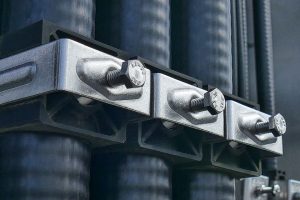
While typically small in size, fasteners play an essential role in the production of countless goods and products. As their name suggests, they are designed to “fasten” two or more surfaces. Not all fasteners are the same, however. Conventional screws are the most common type of fasteners, but there are other types available, including captive fasteners. So, what is a captive fastener exactly?
Overview of Captive Fasteners
A captive fastener is a special type of screw that’s able to lock into a pre-drilled hole to provide a secure and permanent hold. Like other screws, they feature a head on top and external threading on the sides. Captive screws are unique, however, because of their ability to be fastened and unfastened without removing the screw from the pilot hole in which it was installed.
With a traditional screw, unfastening will result in the screw detaching from the pilot hole. As a result, certain applications require the use of captive fasteners. Unfastening a captive screw won’t remove it from the pilot hole in which it was installed. Rather, the captive screw will remain inside the pilot hole. At the same time, unfastening the captive screw will free the surfaces with which it was used to join.
How Captive Fasteners Are Made
According to Wikipedia, manufacturing companies use several methods to make captive fasteners, some of which includes thread locking, broaching or press-fitting. Depending on the application, manufacturing companies may heat or weld captive fasteners into place.
Benefits of Captive Fasteners
Because they create a permanent hold with the pilot hole in which they are installed, captive fasteners don’t suffer from the same age-related degradation as traditional screws. Once a captive fastener is installed into a pilot hole, it will remain in the pilot hole — even if the captive fastener is unfastened. Because of this, captive fasteners offer a high level of protection against vibrations, stress and other physical forces that could otherwise loosen a traditional screw.
While they may sound complex, captive fasteners are also relatively simple and inexpensive. Therefore, manufacturing companies can use them in their products without spending a fortune. Captive fasteners can even prove cost-effective because of their ability to protect against loosening, which could lead to damage to the joined surfaces.
The Bottom Line on Captive Fasteners
Captive fastener is a type of screw that, when inserted into a pilot hole, becomes permanent. It can still be unfastened and refastened, but it will remain inside the pilot hole.
